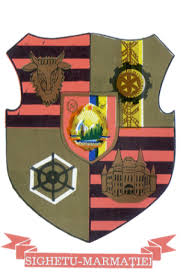 Sighetu Marmaţiei
Sighetu Marmaţiei

Sighetu Marmaţiei, also spelled Sighetul Marmaţiei, formerly Sighet, is a city (municipality) in Maramureş County near the Iza River, in north-western Romania.
Inhabited since the Hallstatt period, the urban area was situated on an important route that followed the Tisza Valley. The first mention of a settlement dates back to the 11th century, and the city as such was first mentioned in 1326. In 1352, it was a free royal town and the capital of Máramaros comitatus of the Kingdom of Hungary.
From 1556, the settlement - like the Castle of Huszt - was a residence of Transylvanian Princes; from 1570 to 1733, the town and the county were part of the Principality of Transylvania. In 1733, King Charles III returned it and Máramaros County to his Hungarian domain.
Sighetu Marmaţiei was one of the Romanian, Rusyn, and Jewish cultural and political centers in the Kingdom of Hungary. The Jewish community was led by the Teitelbaum family — who also led the Satmar Hasidic community.
It became part of the Kingdom of Romania at the end of World War I, and was again under Hungarian administration during World War II as a result of the Second Vienna Award. The latter lasted until 1944 and in these years more than 20,000 Jews from Sighet would be sent to Auschwitz (including the Nobel Peace Prize winner Elie Wiesel, born in Sighet) and other Nazi extermination camps. Nowadays there are only about 21 Jews living in Sighetu Marmaţiei.
The Treaty of Paris at the end of World War II voided the Vienna Awards, and Sighetu Marmaţiei returned to Romania.